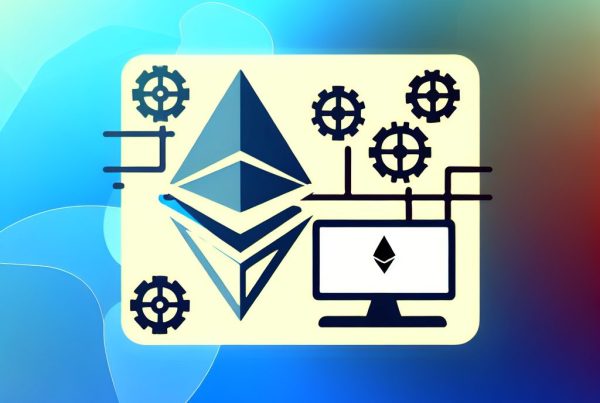Understanding Token Emissions in the Cryptocurrency Industry
The cryptocurrency landscape is vast and complex, with various mechanisms driving the creation and distribution of digital assets. One of the most critical concepts in this ecosystem is token emissions. Understanding how token emissions work is essential for anyone looking to invest in or develop blockchain projects. This article delves into the intricacies of token emissions, their implications, and their role in the broader cryptocurrency market.
What Are Token Emissions?
Token emissions refer to the process by which new tokens are created and distributed within a blockchain network. This process can occur through various mechanisms, including mining, staking, and initial coin offerings (ICOs). The rate and method of token emissions can significantly impact a cryptocurrency’s value, supply dynamics, and overall market behavior.
Types of Token Emissions
Token emissions can be categorized into several types, each with its unique characteristics and implications:
- Mining: In proof-of-work (PoW) systems, new tokens are generated as rewards for miners who validate transactions and secure the network. Bitcoin is the most notable example of this mechanism.
- Staking: In proof-of-stake (PoS) systems, token holders can lock their assets to support network operations and, in return, receive newly minted tokens. Ethereum 2.0 is transitioning to this model.
- Initial Coin Offerings (ICOs): Projects can raise funds by issuing tokens to investors in exchange for established cryptocurrencies like Bitcoin or Ethereum. This method allows for rapid capital accumulation.
- Airdrops: Tokens can be distributed for free to existing holders of a cryptocurrency, often as a marketing strategy or to reward loyal users.
- Token Burns: Some projects implement token burns, where a portion of tokens is permanently removed from circulation, effectively reducing supply and potentially increasing value.
The Importance of Token Emission Models
The model chosen for token emissions can have profound implications for a cryptocurrency’s ecosystem. Here are some key factors to consider:
- Supply Control: Emission models dictate how many tokens will be available over time, influencing scarcity and value.
- Incentives for Participation: Well-structured emissions can encourage users to participate in network activities, such as staking or governance.
- Market Dynamics: The rate of token emissions can affect market sentiment and trading behavior, impacting price volatility.
Real-World Applications of Token Emissions
Token emissions are not just theoretical concepts; they have real-world applications that can be observed in various blockchain projects. Here are a few notable examples:
Bitcoin (BTC)
Bitcoin utilizes a PoW model for token emissions. Miners are rewarded with newly minted BTC for solving complex mathematical problems. The emission rate is halved approximately every four years in an event known as the “halving.” This mechanism ensures that the total supply of Bitcoin is capped at 21 million, creating scarcity that has contributed to its value appreciation over time.

Ethereum (ETH)
Ethereum is transitioning from a PoW to a PoS model with Ethereum 2.0. In this new system, validators will be rewarded for securing the network by staking their ETH. This shift aims to improve scalability and reduce energy consumption while maintaining a robust emission model that incentivizes participation.
Cardano (ADA)
Cardano employs a unique PoS mechanism called Ouroboros, which allows users to earn rewards by staking their ADA tokens. The emission schedule is designed to ensure a steady supply of new tokens while promoting network security and decentralization.
Token Emission and Market Behavior
The relationship between token emissions and market behavior is complex. Here are some key insights:
- Inflation vs. Deflation: High token emissions can lead to inflation, diluting the value of existing tokens. Conversely, deflationary models, such as token burns, can enhance value by reducing supply.
- Market Sentiment: News about changes in token emissions can significantly impact market sentiment. For instance, announcements of reduced emissions or token burns often lead to price surges.
- Long-Term Viability: Sustainable emission models are crucial for the long-term viability of a cryptocurrency. Projects that fail to manage emissions effectively may struggle to maintain user interest and investment.
Challenges and Risks Associated with Token Emissions
While token emissions can drive growth and engagement, they also come with challenges and risks:
- Market Manipulation: Large holders, or “whales,” can manipulate token prices by strategically timing their sales or purchases based on emission schedules.
- Regulatory Scrutiny: As governments worldwide increase their focus on cryptocurrencies, projects with unclear or unsustainable emission models may face regulatory challenges.
- Security Risks: Poorly designed emission models can lead to vulnerabilities, such as Sybil attacks, where malicious actors create multiple identities to gain control over the network.
Future Trends in Token Emissions
The cryptocurrency industry is continually evolving, and token emissions are no exception. Here are some trends to watch for in the coming years:
- Hybrid Models: Projects may adopt hybrid emission models that combine elements of PoW and PoS to balance security and efficiency.
- Dynamic Emission Rates: Some projects are exploring dynamic emission rates that adjust based on network activity or market conditions, allowing for more responsive supply management.
- Increased Transparency: As the industry matures, there will likely be a push for greater transparency in token emissions, with projects providing detailed reports on their emission strategies.
FAQs About Token Emissions
What is the difference between token emissions and token supply?
Token emissions refer to the process of creating and distributing new tokens, while token supply refers to the total number of tokens available in circulation at any given time.
How do token emissions affect the price of a cryptocurrency?
Token emissions can influence price through supply dynamics. High emissions can lead to inflation and price depreciation, while controlled emissions can create scarcity and potentially increase value.
Are all cryptocurrencies subject to token emissions?
No, not all cryptocurrencies have token emissions. Some, like Bitcoin, have a defined emission schedule, while others may have a fixed supply or use different mechanisms for distribution.
Can token emissions be changed after a cryptocurrency is launched?
Yes, some projects may implement changes to their emission models through governance mechanisms or protocol upgrades, but such changes often require community consensus.
Conclusion
Understanding token emissions is crucial for anyone involved in the cryptocurrency space. The mechanisms behind token creation and distribution can significantly impact a project’s success, market behavior, and long-term viability. As the industry continues to evolve, staying informed about trends and changes in token emissions will be essential for investors and developers alike.
For the latest updates on cryptocurrency news and price tracking, consider visiting Bitrabo. Follow me on social media for more insights: X, Instagram, Threads.
Disclaimer: This article is for informational purposes only and should not be considered financial advice. Always conduct your own research before investing in cryptocurrencies.
The Crypto Watchlist of the Week 🔎
Subscribe to receive expert-curated projects with real potential—plus trends, risks, and insights that matter. Get handpicked crypto projects, deep analysis & market updates delivered to you.


